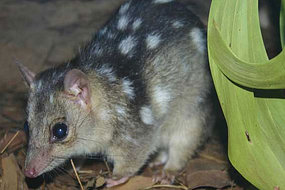∞ Species Justice
Ecological Injustices
Humanity’s perpetual destruction of nature is an ecological crime, yet humanity lacks the will to outlaw this crime and enforce prosecution.
Deforestation, land clearing, pollution, poaching wildlife, trade in native plant and animal species, improper disposal of wastes, logging old-growth forests are ecological crimes and collectively present biospherical crimes.
The biosphere is the global sum of all ecosystems, integrating all living beings and their relationships, including their interaction with the elements of the lithosphere (land), hydrosphere (oceans and rivers), and atmosphere. The term ‘biosphere’ was first coined by geologist Eduard Suess in 1875, meaning “the place on earth’s surface where life dwells.[1]
Our planet’s greatest problem is that unlike human crimes which are prosecuted to control what would otherwise be violent anarchy, ecological crimes are going unprosecuted and even encouraged. Logging corporations continue deforestation of the world’s old growth forests, industries continue to pollute emissions to air, water and soil, international trade in endangered species continues, and improper disposal of wastes continues. Interpol only began fighting environmental crime in 1992.[2]
Ecological crime remains out of control essentially because environmental laws are either inadequate, not enforced, not prosecuted or indeed unenforceable.
Ecocide
Raphael Lemkin (who coined ‘genocide’ to describe the horrors of the holocaust) has coined the term ‘ecocide’ to describe ‘the extensive destruction, damage to or loss of ecosystem(s) of a given territory, whether by human agency or by other causes, to such an extent that peaceful enjoyment by the inhabitants of that territory has been severely diminished.’[3]
In 2009, the Zimbabwe Government was permitting to poach African Elephants (Loxodonta Africana) which are classified as Vulnerable A2a. The British Sunday Times on 18 Jan-09 reported that hunting parties are paying out thousands to kill elephants, including calves, in Zimbabwe.
“Peter Carr, a professional hunting outfitter from Yorkshire, took a party to the Hwange national park last year to cull a herd of 11 elephants, including some “adolescent” calves.”
“In Zimbabwe starving people have resorted to killing elephants for food, and recent reports have suggested Mugabe’s soldiers are being given meat from carcasses.”
“Ivory from slaughtered elephants has been legally sold by the Zimbabwean authorities to China and Japan. Last November, Zimbabwe sold nearly four tons of ivory in a one-off sale permitted under international law, for £330,000.” [4]

Habitat Destruction
Land clearing in Australia has seen as much as 70% of Australia’s native vegetation has been cleared or modified in the past 200 years, most of which has occurred in the last 50 years.
Land clearing involves the removal of native vegetation and habitats, including the bulldozing of native bushlands, forests, savannah, woodlands and native grasslands and the draining of natural wetlands for replacement with agriculture, urban and other land uses.
Prior to European settlement native vegetation covered most of Australia but now only 87% of the country is vegetated by native species. In total 13% of Australia’s native vegetation has been lost due to land clearing, with the majority of this being native forests and woodlands.
The primary motivator for land clearing in Australia is agricultural profit mainly fro cattle, cotton and wheat production. Historically this has been supported by the Commonwealth and State Governments as an essential part of improved productivity essential for national economic prosperity. Government incentives have encouraged Australia’s land clearing, including highly discounted sale of government owned land for agriculture, low interest loans, tax concessions and the War Service Land Settlement Scheme, and financial support programs such as drought relief assistance.[5]
According to the Australian Conservation Foundation (ACF)[6]:
- ‘Australia has the fifth highest rate of land clearing in the world. We clear more bush each year than poverty-stricken countries like Burma, Mexico, Zimbabwe, Nigeria and the Congo.
- Australia clears land at the massive rate of over half a million hectares a year.
- The rate of land clearing is accelerating. As much land has been cleared in the last 50 years, as was cleared in the previous 150 years.
- Woodlands are Australia‘s most threatened, and least protected, wooded ecosystem.
- 85% of all land clearing in Australia happens in Queensland. Victoria has lost more native vegetation than any other state and Tasmania has the highest clearing rate in proportion to the State’s total land area.
- For every tree planted, 100 are bulldozed.’
Species Extinctions
In August 2009, research scientist in CSIRO’s Biodiversity area, Professor Iain Gordon, chaired a symposium on Australia’s mammal extinction crisis at the 10th International Congress of Ecology in Brisbane.
Gordon has warned that Australia leads the world in mammal extinctions. “Over the last two hundred years 22 mammal species have become extinct, and over 100 are now on the threatened and endangered species list, compiled as part of the federal government’s Environment Protection and Biodiversity Conservation Act.
Evidence suggests Australia is on the cusp of another wave of mammal extinctions with a reduction in the abundance of some species and alarmingly, their range.
Gordon pointed to Australia’s medium-sized mammals having to combat feral animals, particularly cats and foxes; increased grazing pressure; altered fire regimes; the clearing of habitat for development and production; and now, the effects of climate change. “It isn’t that any of these pressures are particularly important by themselves, but the fact that many of them act in concert has had a significant impact on causing the crashes in population numbers, and increasing the risk of species becoming extinct.”
“For example, the crescent nailtail wallaby was once an abundant and widespread macropod of central and western Australia. The pressures of feral cats and foxes coupled with clearing for agriculture and grazing, and altered fire regimes pushed this little species over the edge and it is now classified as extinct.
The problem is also more far-reaching than we first assumed. Many people may think that animals are becoming extinct in the south of Australia where habitat destruction is quite evident.”[7]

Cormac Cullinan of South African environmental law firm, EnAct International, has written a book ‘Wild Law’. In it he posits:
“We are rapidly destroying our only habitat, Earth. It is becoming clear that many of the treaties, laws and policies concluded in recent years have failed to slow down, let alone halt or reverse, this process. Cormac Cullinan shows that the survival of the community of life on Earth (including humans) requires us to alter fundamentally our understanding of the nature and purpose of law and governance, rather than merely changing laws.”[8]
Species Justice
Species Justice is an umbrella term that spans across the disciplines of deontology, applied ethics, justice theories and manifests into environmental law, animal law, animal law enforcement and Earth jurisprudence.
It covers the broad fields of animal ethics, animal rights, animal welfare, animal law and animal law enforcement and environmental protection legislation and its enforcement. Species justice promotes and ethic of respect for human and non-human rights. It advocates a pantheist philosophy of “respect and active care for the rights of all humans and other living beings.”[9] Species Justice upholds moral and legal rights to humans, animals, plants, ecosystems and all living things. It recognises the need for humans to have respect for every other species on the planet[10] – significantly those threatened by extinction such as tigers, and rare endemic ecosystems such as old growth forests.
Of course, it gets complex and problematic with species which threaten other species and which are themselves pests or pathogenic. Moral dilemmas exist between the rights of species and Darwin’s theory of natural selection and Herbert Spencer’s more corrosive ‘survival of the fittest’ proposal and natural predation and the need for food supply. Morally one could argue that endemic species have a natural right to exist that exceeds that of pest species, but if we think of humans as the pest, then how does one resolve the dilemma of threatened endemic species?
We do not attempt to resolve these ethical dilemmas here, but simply flag them as necessitating urgent open debate. Our purpose here is to highlight the moral imperative of species justice and apply them as they relate to broadly to the plight of wildlife and habitat conservation.
Deontological Equality
Species Justice prescribes humanity’s moral obligation to respect the natural rights of living things to live in their natural state and to correspondingly treat living things with justice and equity. Consistent with philosopher Immanuel Kant’s deontological theory of law, moral obligations need to be formalised into law that can be followed universally and consistently.
Species Justice requires following a universal moral code applying on an egalitarian basis – ‘deontological equality’. Deontological equality posits that humans should be part of Nature, rather than set above it. Just as humans are required to treat other humans with equal respect and rights, so too humans afford equal respect and rights to non-humans. Of course, humans have a moral choice, non-humans don’t. Typically in modern society, the moral choices humans make in relation to wildlife and forests are lifestyle choices, not ones of survival.
Earth Jurisprudence
Species Justice is a law based philosophy premised on normative jurisprudence (or questioning the purpose of law and its proper function). Normative jurisprudence asks such fundamental questions as:
- ‘What sorts of acts should be subject to punishment?
- What sorts of punishment should be permitted?
- What is justice?
- What rights do we have?
- Is there a duty to obey the law?
- What value has the rule of law? [11]
Species are ‘species-centric’ – their instinct is survival and each species puts its survival interests first. Humans traditionally are anthropocentric – put their survival interests first and with superior intelligence, extending that to treating every living and nonliving thing on earth as theirs for their discretionary use. The anthropocentric view of jurisprudence, “promotes the interest of the human community… (while) perpetuating a view of the Earth as simply a collection of ‘resources’ or objects which human beings are entitled to exploit for their exclusive benefit.”[12]
This may be referred to as ‘speciesism’ (a prejudice recognising the rights of one species over another). Such human jurisprudence benefits humans, but it is an artificial unreal ideal. Human jurisprudence narrow-mindedly isolates humans from Nature as if humans can exist independently of other species and the planet. Superficially, human jurisprudence may seem to be justice for the human species, but it is inequitable because it denies natural justice to nonhuman species. Such insular anthropocentric thinking is a key reason why humans have exploited the Earth, destroyed Nature and caused climate change.
In order to start addressing this discriminating injustice, jurisprudence needs to equitably recognise the rights of all species to exist as members of a single Earth community. ‘Earth jurisprudence’ seeks to achieve this. It is based on the concept that all species have rights by virtue of their existence. Earth jurisprudence advocates “looking at the actual philosophy and value systems that underpin most legal and governance systems, and making sure that they support, rather than undermine, the integrity and health of the Earth”.[13] Holistically, ‘earth jurisprudence’ is a maturing of Man from being anthropocentric to being ‘Earth-centric’.
Philosopher and cultural historian, Thomas Berry, first conceived the idea of Earth Jurisprudence in true recognition that the well-being of each member of the Earth community (including humans) is dependent on the well-being of the Earth itself.
his quest to encourage greater respect for Nature and “to change our approach to environmental law making, the philosophy on which laws implement policy, and the systems of governance which enable such laws to be made and applied.”
For further information about Earth jurisprudence and its principles visit:
^http://www.earthjurisprudence.org
Existence Rights
Species justice is premised on the concept of existence rights – the right of any living thing to exist.
Such a call will be familiar to many as repeatedly professed as a right to exist by the State of Israel. The recognition of Israel’s right to exist is presented as a moral absolute, particularly by Israelis. An old growth forest has a right to exist and not be logged, burnt and bulldozed into oblivion for some human utility justification.
Again the principle becomes complex when conflicting rights are presented. Time and again forestry will argue the rights of loggers to have jobs from logging against old growth conservation rights. Laws are enacted to balance such incompatible rights. These laws need to balance the absolute comparative value of human income choice to the risk of extinction of a species and dependent ecosystems and species.
Where human rights self-contradict in this way, the standard answer is to limit the rights of one by the rights of the other.
“The dissolution of Czechoslovakia contravened that state’s right to exist – but then Czechoslovakia itself contravened Slovakia‘s right to exist. The right to exist of an independent Basque Republic, for instance, is a threat to Spain‘s existence – certainly if it triggered secession in other regions of Spain. Spain‘s existence is itself a threat to a possible Iberian state – an idea with marginal support at present, but not impossible for that reason.”[14]
Rights are variously construed as legal, social, or moral freedoms to act or refrain from acting, or entitlements to be acted upon or not acted upon.
Golden Rule of Fairness
Species justice is premised on the concept of fairness. The golden rule[15] of fairness prescribes to ‘do unto others as you would have them do unto you.’ This applies across perhaps all human cultures in one form or another. Species justice includes all species not just humans. “It is about a balanced fairness that counteracts the tendency to use different rules for myself and for others.”
By ‘others’ we extend that to all living things.
Habitat Advocate Species Ethics
We at The Habitat Advocate are philosophically opposed to the following on the ethical grounds of species justice:
1. Cruelty, mistreatment, suffering, distress or neglect to any animal
2. Laboratory research or testing of any animal
3. Trade in fur, skins, animal parts of any wildlife
4. Live export of farm animals
5. Battery caging of any animal
6. Isolation of any animal classified as a “social species”. A social species animal is deemed to be a victim of abuse if it does not cohabit, or at least have contact, with others of its own kind. [Refer to Swiss law effective from 1-Sep-08]
7. Domestic breeding of companion animals, since there is a permanent excess of abandoned, unwanted and neglected companion animals in RSPCA shelters. [Domestic pedigree breeding has been found to cause abnormal genetic abnormalities that can be painful and cruel].
8. Keeping wildlife as pets
9. Using animals for entertainment and gambling, namely horse racing, dog racing, bull fighting, dog fighting, cock fighting and fox hunting
10. Wildlife Poaching (state-sanctioned or otherwise)
11. Animal blood sports such as fox hunting, hare coursing, boar hunting, bull fighting, bear-baiting, cockfighting, dog fighting or rat-baiting.
12. Animals used in film making where there is any risk to the animal of harm, cruelty, mistreatment, suffering, neglect or distress
13. Animals used in warfare
14. Animals for entertainment – circuses
15. Animals confined in cages, except when transporting for medical attention or government approved relocation. We consider it mandatory that a veterinary surgeon must accompany any mammal caged for the duration of any transportation and then to examine and certify the health and condition of that animal once transportation has been completed.
16. Killing any wild animal for any reason except when injured and suffering and unable to be medically treated. Any such killing to be reported to a local accredited wildlife agency.
Habitat Advocate’s ethical dilemmas
At The Habitat Advocate, we recognise that all vertebrate animals are sentient beings and so feel pain and emotion and have a form of consciousness. This position extends beyond the arbitrary limitations of philosopher, Tom Regan, who restricts his definition of sentient animals only to mammals over one year old.
D1. We have a moral dilemma with the Abolitionist perspective first posited by philosopher, Gary Francione. This advocates that all animals have a right not to be owned. We consider that wild animals do have a right not to be owned. Our dilemma is whether non-wild animals may be owned. We question the philosophical argument that farm (livestock) animals cannot be owned as property.
D2. We have a moral dilemma with the use of livestock (farm) animals for human consumption – food, clothing. We support the Animal Welfarist position as it applied to farm (livestock) animals and domesticate companion animals.
D3. We are morally opposed to zoos established for public viewing. We are not opposed to zoos which are not primarily established for the purposes of a wildlife hospital, wildlife breeding and then only those located in the natural region of the wildlife with programmes focuses on re-release into the wild.
D4. We are opposed to animal theme parks which are primarily established for public viewing.
D5. We are not opposed to animal game reserves provided none of the animals in those reserves are poached or hunted. We disapprove of the term ‘game’ since it harks to 19th Century colonial poaching culture. We recommend all such ‘game reserves’ are changed to ‘wildlife reserves’.
We shall be prepared to debate these views in due course.
References:
[1] ^http://en.wikipedia.org/wiki/Biosphere
[2] ^http://www.interpol.int/Public/EnvironmentalCrime/Default.asp
[3] ^http://www.treeshaverightstoo.com/ecocide
[4] ^http://www.timesonline.co.uk/tol/news/uk/article5537002.ece
[5] ^http://en.wikipedia.org/wiki/Land_clearing_in_Australia
[6] ^http://www.acfonline.org.au/articles/news.asp?news_id=354
[7] ^http://www.abc.net.au/science/articles/2009/09/02/2674674.htm
[8] ^http://greenbooks.co.uk/store/wild-law-p-65.html
[9] ^http://www.pantheism.net/
[10] ^http://www.animaljustice.com/
[11] ^http://en.wikipedia.org/wiki/Jurisprudence#Normative_jurisprudence
[12] ^http://www.earthjurisprudence.org/content/who.html
[13] ^http://www.earthjurisprudence.org/content/who.html
[14] ^http://state-ethics.blogspot.com/2009/03/israels-right-to-exist.html
[15] ^http://changingminds.org/explanations/needs/fairness.htm









